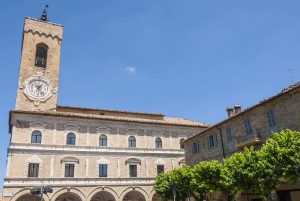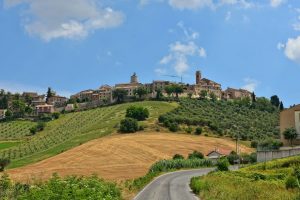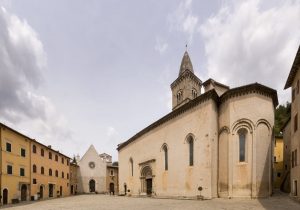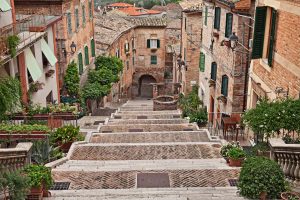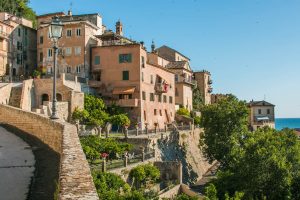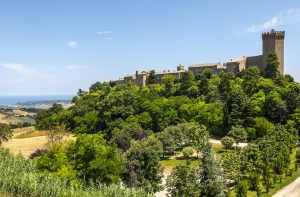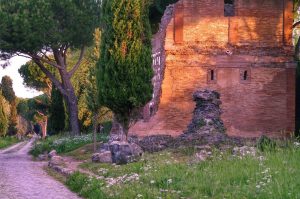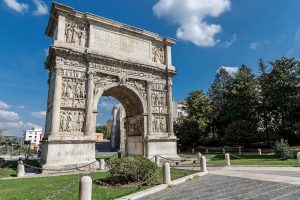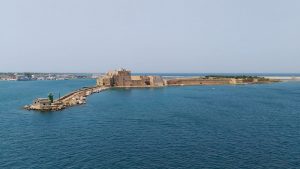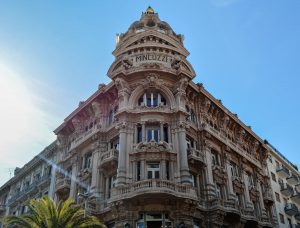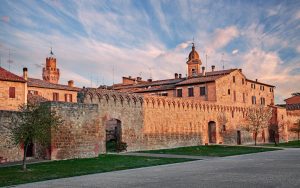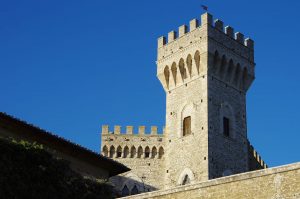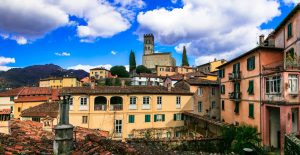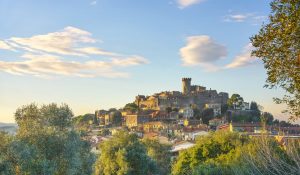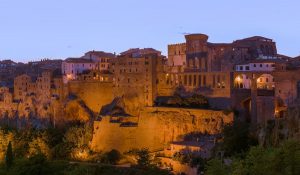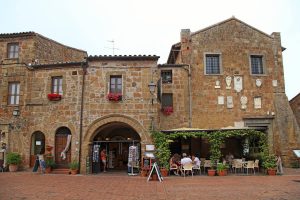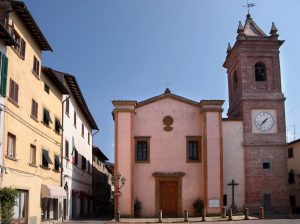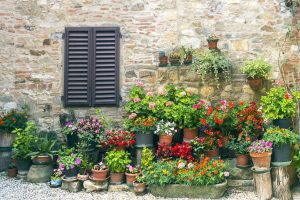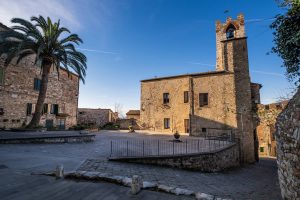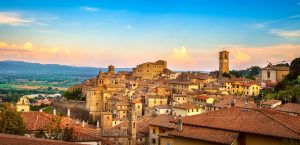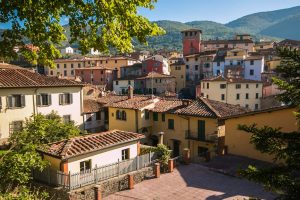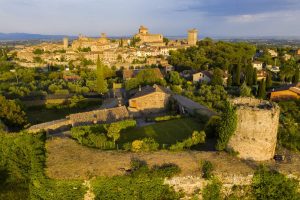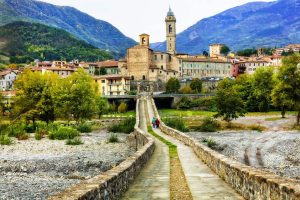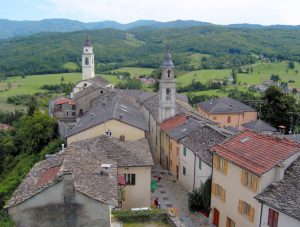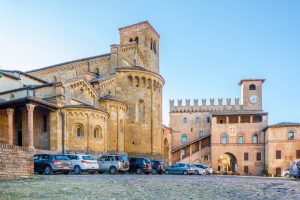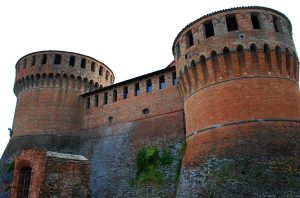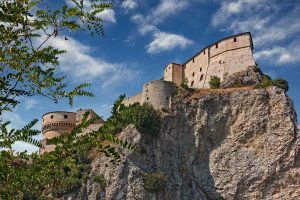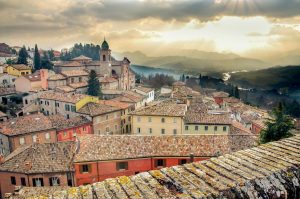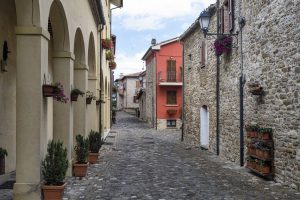
©Bigstock.com/Claudiogiovanni
The north of the Marche region is home to some hidden gems. As the name suggests, the Province of Pesaro and Urbino is centred around its two main towns – Pesaro, the capital, and Urbino, a magnificent World Heritage Site with a beautiful historic town centre. Another special town is Fano which, despite its location directly on the Adriatic coast and with miles of beaches, has managed to retain its original, understated charm. In fact, this applies to large parts of the province which has a few insider tips in store for you. The Italian private association “I borghi più belli d’Italia” was able to find ten of the most beautiful places in Italy here, and they could hardly be more different. Discover the most beautiful places in the Province of Pesaro and Urbino with us!
Fiorenzuola di Focara
Fiorenzuola di Focara (approx. 100 inhabitants) has been part of the provincial capital Pesaro since 1929. Located directly on a cliff overlooking the Adriatic Sea and in the heart of the Monte San Bartolo Nature Park, the town was an important landing and navigation site for Greek seafarers in pre-Christian times. In addition to some fascinating buildings, such as the Chiesa di Sant’Andrea Apostolo that was rebuilt in 1920 and has an imposing 12th century bell tower, it is above all the fantastic views that make Fiorenzuola di Focara one of the most beautiful places in Italy. Watching the sunrise over the Adriatic Sea from the tower and then strolling down to the beach along the panoramic path is a real treat.
Frontino
The smallest independent municipality in the province (approx. 300 inhabitants), Frontino, is also located on a cliff in an elevated position, in the middle of a nature park (Parco naturale regionale del Sasso Simone e Simoncello), albeit at the other end of the province and thus completely inland. Probably founded during Roman times, the Castello di Frontino on the aforementioned cliff is an absolute eye-catcher. Palazzo Vandini with its Renaissance charm skilfully complements the building. On the other hand, the Convento di Montefiorentino is one of the largest convents in the entire Marche region, equipped with a magnificent altarpiece. Don’t sleep on the Monastero di San Girolamo, built around 1500, with its altarpieces and frescoes, or the old mill with the bread museum.
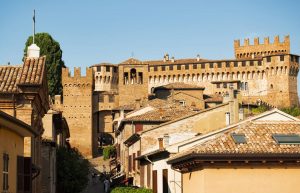
©Bigstock.com/giodilo
Gradara
We travel from one of the smallest and most beautiful places in the Province of Pesaro and Urbino to what is probably the most famous one. Gradara (approx. 4,900 inhabitants) is a magnificent city of arts that has almost completely retained its medieval appearance. The centrepiece is undoubtedly the fortress, built from 1150, which Dante Alighieri chose as the setting for the ill-fated love story of Francesca and Paolo Malatesta in his “Divine Comedy”. Take a look behind the fortress’s massive walls during a guided tour. A visit to the Teatro dell’Aria, on the other hand, brings you into contact with the kings of the skies. In this aerial theatre, you can watch more than 70 birds of prey in a spectacular flying display.
Macerata Feltria
The village of Macerata Feltria (approx. 2,100 inhabitants) is divided into two parts, if you will, across two levels – the old town centre of Lombard origin with the early medieval castle on a hill and the “Mercatale” below, an extension of the old Renaissance market square. However, its roots go back to ancient times, probably due to the thermal springs. Numerous churches line the present-day town, including San Giuseppe al Castello with its terracotta portal and gilded wooden tabernacle, and the Romanesque church of San Cassiano which dates back to the 11th century and was built on the ruins of Roman buildings (parts of which you can see through illuminated glass cases). And then there are a few palaces and an old mill to round off your journey through time.
Mercatello sul Metauro
Settled by the Umbrians in the Bronze Age, conquered by the Romans, destroyed by barbarians and finally rebuilt by the Lombards: Mercatello sul Metauro (approx. 1,300 inhabitants) can look back on an eventful early history. The present-day town centre is centred around the river Metauro, crossed by a Romanesque arched bridge, and was built around the 10th / 11th century collegiate church of Santi Pietro e Paolo. Here, the remains of Romanesque architecture meet more modern changes and influences. The Chiesa di San Francesco has also had an exciting history but is best known for the museum in its sacristy containing works of art from the Renaissance and from the Rimini school of painters. Another eye-catcher is the Pieve Collegiata whose walls date back to a Romanesque 10th century building.
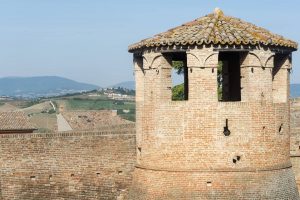
©Bigstock.com/Claudiogiovanni
Mondavio
Mondavio (approx. 3,900 inhabitants) has retained almost all of its original medieval structure like few other places. You can enter the centre through the last remaining of the former three rings of walls via the old Porta San Francesco gate. The undisputed highlight is the Rocca, built at the end of the 15th century at the behest of Giovanni Della Rovere. Mondavio’s fortress is still in excellent condition and now houses two museums. An annual festival on August 14th and 15th recreates an old banquet from the time of its construction, accompanied by plays and competitions. In addition, a brief tour of several centuries of religious architecture awaits you, including the magnificent churches of Santi Pietro e Paterniano (baroque), Santa Maria della Quercia (Renaissance) and San Francesco (gothic).
Mondolfo
Mondolfo (approx. 14,300 inhabitants) itself is not only one of the largest towns in the Province of Pesaro and Urbino, but also one of the largest most beautiful places in Italy. However, the actual borgo we are going to visit is small and quaint with a population of around 250. The once dominant Bastione di Sant’Anna has since been converted into a garden, but the massive ring walls have remained. Several churches await you behind them, such as Santa Giustina with one of the most beautiful organs of the 18th century Venetian organ-building school. Santa Maria del Soccorso is equally exciting, its three sandstone portals featuring Renaissance motifs and paintings by various masters. The town hall with its civic tower is much more recent but no less spectacular, adding a pleasant splash of neo-Gothic colour.
Monte Grimano Terme
Narrow streets wind uphill towards the centre of Monte Grimano Terme (approx. 1,100 inhabitants), about 300 metres above the valley, with the 15th century civic tower as its emblem. The town is still surrounded by the old fortress walls, although the gates and drawbridge have been lost over time. These walls invite you to take a little tour with magnificent views. The parish church of Monte Grimano Terme is also rather simple and restrained – a minimalist yet elegant late 18th century neoclassical building.
Montefabbri
Strictly speaking, Montefabbri (approx. 70 inhabitants) is a district of Vallefoglia, but the mini-borgo stands alone as one of the most beautiful places in the Province of Pesaro and Urbino. This is hard to dispute, as Montefabbri has hardly changed since the early 15th century. Although the small houses were once built out of bitter poverty, they have since become a precious commodity. As soon as you pass through the 12th century city wall, you will be immersed in this unique atmosphere. However, the parish church of San Gaudenzo, probably built in the 7th / 8th century and extensively renovated and expanded hundreds of years later, is a particular gem. The breathtaking interior with its fascinating high altar, a Roman marble baptismal font and several tombs will surely captivate you.
Pergola
Even today, Pergola (approx. 6,200 inhabitants) is still known as the “city of a hundred churches”. There may not be quite as many as that today, but the traces of the long dependence on and devotion to the papal state remain clearly visible. San Giacomo, a 12th century gothic building with a fascinating wooden altar cross, is one of the oldest church structures. The imposing cathedral, originally built by Augustinian monks, combines Romanesque-Gothic roots with a baroque interior and a neoclassical façade. However, one of the most intriguing phenomena concerns the “Porte del Morto”, the “Doors of the Dead”. The door frame, raised from the street level, can only be reached via steep steps, allowing easy defence of the house entrances – a tradition probably of Etruscan origin. The discovery of 1st century AD Roman bronze statues in a field in 1946 is a much more recent spectacle. The Gilt Bronzes of Cartoceto di Pergola are the only Roman gilded bronze equestrian group to have survived centuries over centuries. A special museum has been built for them here in Pergola.
Ten of the most beautiful places in Italy await you in the Province of Pesaro and Urbino, and they couldn’t be more different. Gorgeous views and untouched medieval town centres come together with magnificent churches and palaces, impressive fortifications, as well as exciting museums and archaeological sites that take you back to the earliest settlement history of the region. Don’t miss out on this magical glimpse of the Marche!
